Canada
About Andrew Cusack
 Writer, web designer, etc.; born in New York; educated in Argentina, Scotland, and South Africa; now based in London.
Writer, web designer, etc.; born in New York; educated in Argentina, Scotland, and South Africa; now based in London. read more
News
Blogs
Reviews & Periodicals
Arts & Design
World
France
Mitteleuropa
Knickerbockers
Argentina
The Levant
Africa
Cape of Good Hope
Netherlands
Scandinavia
Québec
India
Muscovy
Germany
Academica
Articles of Note: 13 March 2024
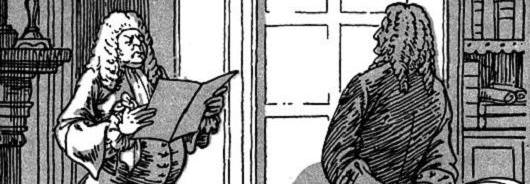
My then-flatmate was getting married the next day and much pottering-about sorting things was required but the idiosyncratic beauty of this building captured my imagination — part Norman, part Moorish. I was almost insulted that I hadn’t come across it in any of my bookish explorations.
The historian Edmund Harris covers Chideock in his lusciously illustrated post on Recusancy in Dorset and the ‘other tradition’ of Catholic church-building.
■ Generations ago it was said that the three institutions no British politician dared offend were the trade unions, the Catholic Church, and the Brigade of Guards. In 2020s Britain there is only one caste which must always be obeyed: the ageing, moneyed homeowners.
Not only do these “NIMBYs” (“Not In My Back Yard”) jealously guard their freeholds, they do whatever they can to prevent more houses being built to guard the value of their prize possessions, vastly inflated by a combination of lacklustre housebuilding and irresponsible leap in migration. As old people vote and young people don’t — and when they do, vote badly — few sensible people can find a way out of this quagmire.
It might be worth looking to the Mediterranean, where Tal Alster tells us How Israel turned urban homeowners into YIMBYs.
■ It’s disappointingly rare to see intelligent outsiders give a considered impression of the current state of play in the Netherlands — that’s Mother Holland for us New Yorkers. Too often commentators in English are either rash cheerleaders for the hard right or bien-pensant liberals eager to castigate and chastise. Both rush to judgement.
What a rare diversion then to read Christopher Caldwell — the only thinking neo-con? — attempt to explore and explain the success of Geert Wilders in the recent Dutch elections.
■ One in ten of Lusitania’s inhabitants are now immigrants, and this discounts those — many from Brazil and other former parts of the once-world-spanning Portuguese empire — who have managed to acquire citizenship through various routes.
Ukrainian number-plates are now frequently be seen on the roads of Lisbon, as far in Europe as you can get from Big Bad Uncle Vlad.
Vasco Queirós asks: Who is Portugal for?
■ Speaking of world-spanning empires, in true andrewcusackdotcom fashion, we haven’t had enough of the Dutch — but we have had enough of their wicked wayward heresies.
Historian Charles H. Parker explores the legacies of Calvinism in the Dutch empire.
■ The City of New York itself is the best journalism school there is. Jimmy Breslin dropped out of LIU after two years, eventually taking up his pen. Pete Hamill left school at fifteen, apprenticed as a sheet metal worker, and joined the navy.
William Deresiewicz argues that a dose of working-class realism can save journalism from groupthink.
■ The New Yorker tells us how a Manchester barkeep found and saved a lost (ostensible) masterpiece of interwar British literature.
■ Our inestimable friend Dr Harshan Kumarasingham explores David Torrance’s history of the first Labour government on its hundredth anniversary.
■ And finally, one for nous les normandes (ok, ok, celto-normandes): Canada’s National Treasure David Warren briefly muses that the Norman infusion greatly refined Anglo-Saxon to give us the superior English tongue we speak today.
Horseshoe for Quebec’s Salon bleu
Refit will change seating plan in Quebec’s parliament chamber
An upcoming renovation to the Hôtel du parlement in Quebec City will also bring a change in the seating plan of the Assembly’s parliamentary chamber. Deputés agreed a moderate alteration to the current Westminster-style seating plan: a horseshoe shape will replace the crowded back two rows of desks with a curved arrangement.
The original clerks’ table designed by the building’s architect, Eugène-Étienne Taché, in 1886 will also be returned to centre-stage in the Salon bleu (formerly the Salon vert) of Quebec’s National Assembly. The room is also, I believe, the only parliamentary chamber to feature in a film by Alfred Hitchcock.
Renovations are scheduled to begin in January of next year, when deputés will start convening in the Salon rouge that formerly housed Quebec’s Legislative Council, abolished in 1968. (Quebec was the last Canadian province to abolish the upper house of its parliament.)
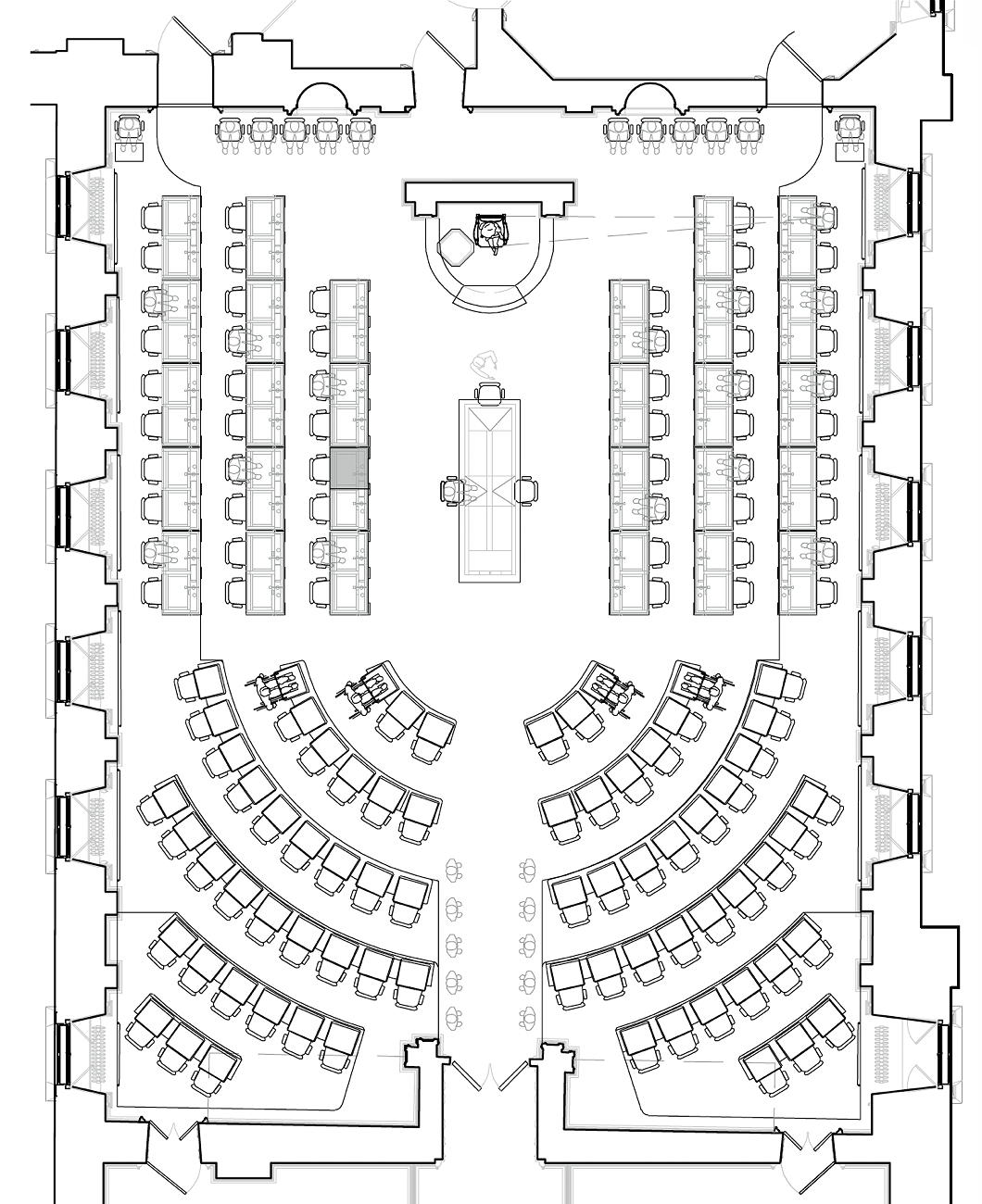
“The Salon bleu has a strong symbolic value for the Quebec nation,” claims Éric Montigny, professor of political science at Laval University (founded 1663).
“We must respect this tradition and evolve in a very, very gradual manner,” Professor Montigny told the Journal de Québec. “A parliament is not trivial.”
The Assembly numbered only sixty-five members when Taché’s edifice was completed in 1886, while today 125 deputés have to fit into the parliamentary chamber.
The new arrangement would make room for as many as 130 legislators, plus the Président in the speaker’s chair. It will also allow for a good number of the historic desks in the chamber to be retained.

Other potential arrangements were considered and rejected, including introducing a half-moon hemicycle akin to Paris, Washington, and other republican legislatures.
Prof Montigny dismissed claims that semicircular arrangements lead to more collaborative dialogue and constructive work between government and opposition parties:
“It’s an argument that is raised regularly, but I don’t know of any studies that will support this theory.”
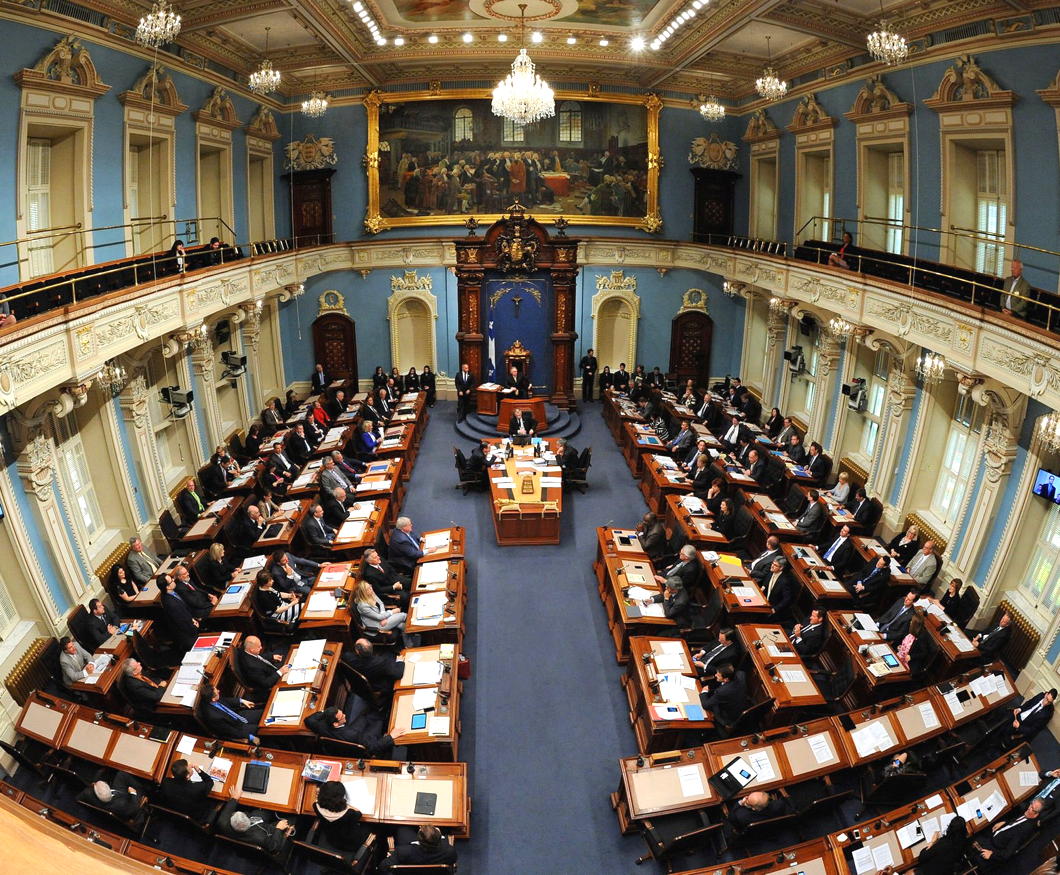
The most significant change to the chamber in recent years was the removal of the crucifix from above the président’s chair, first installed in 1936 by the giant of Quebec politics, premier Maurice Duplessis.
That crucifix, and its 1982 replacement, were removed in 2019 and are now displayed as historical artefacts in an ancillary part of the parliament building.
[NDLR: I wrote about the crucifix back in 2008.]
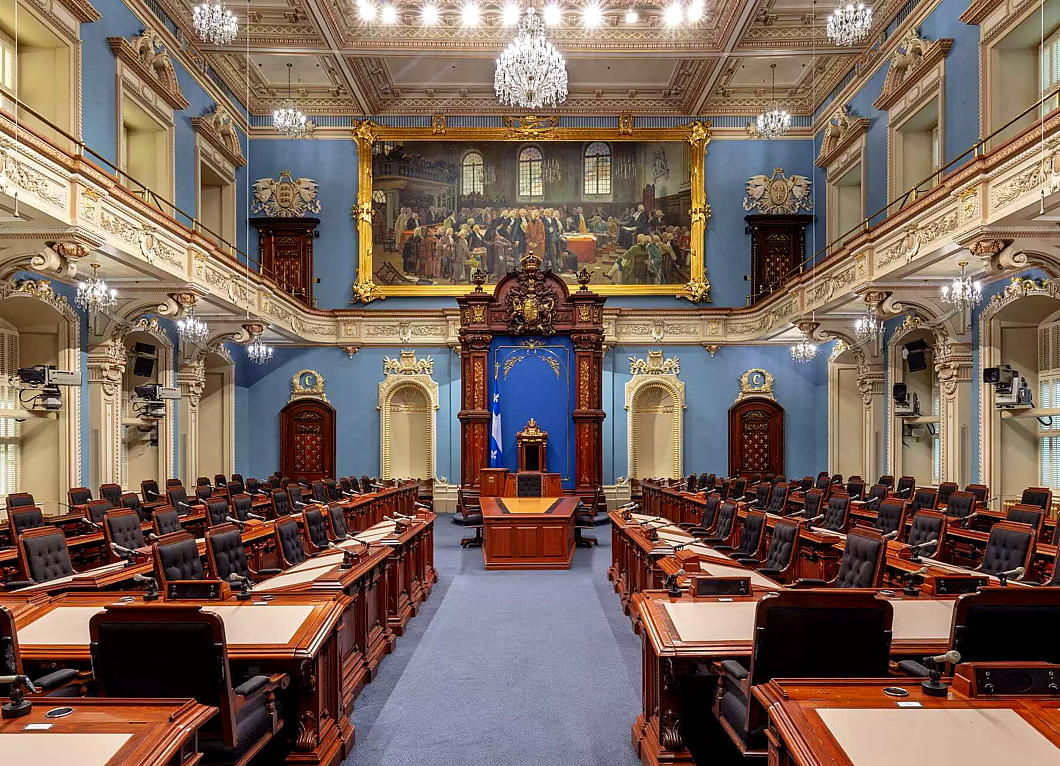
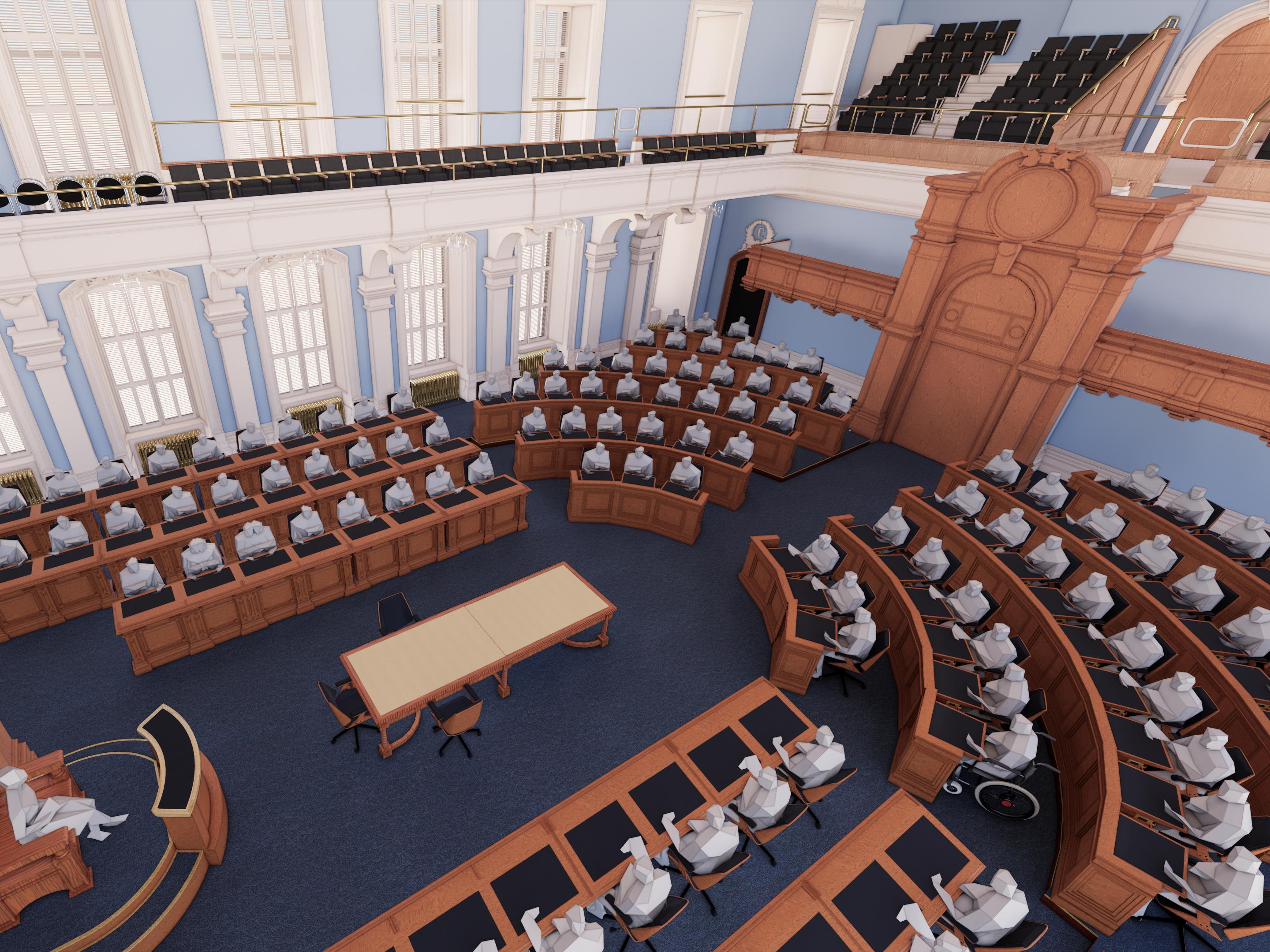
The horseshoe seating plan seems a happy compromise: Westminster-style parliaments — even those that are unicameral like Quebec’s — are honest about the antagonism between government and opposition, and the horseshoe preserves the antiphonal arrangement conducive to this, while rounding it off with a curve at the end.
For my part, I will be happy to see the removal of the arbitrary trapezoid of the modern clerks’ table (below) and its replacement by its historic predecessor.
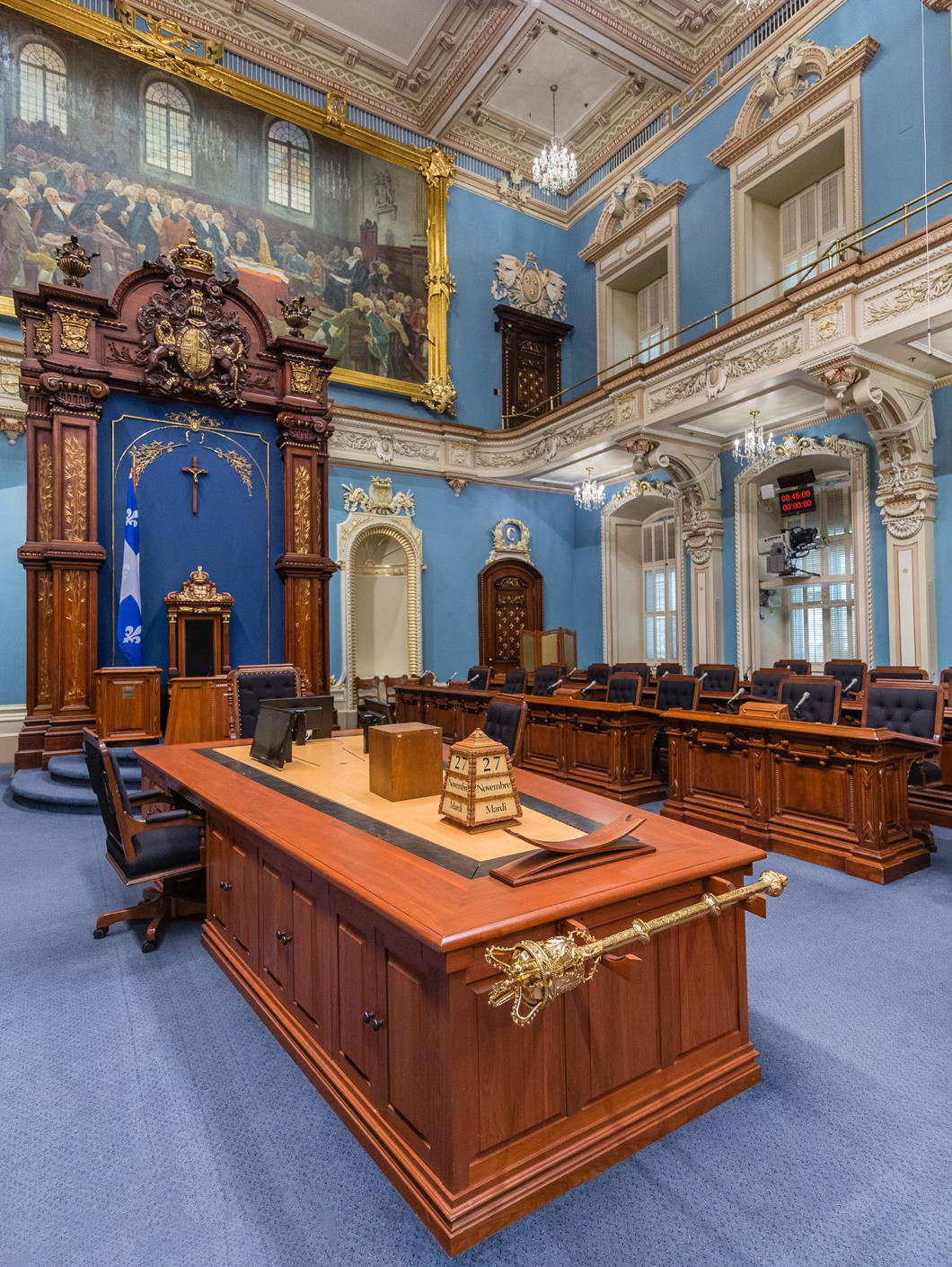
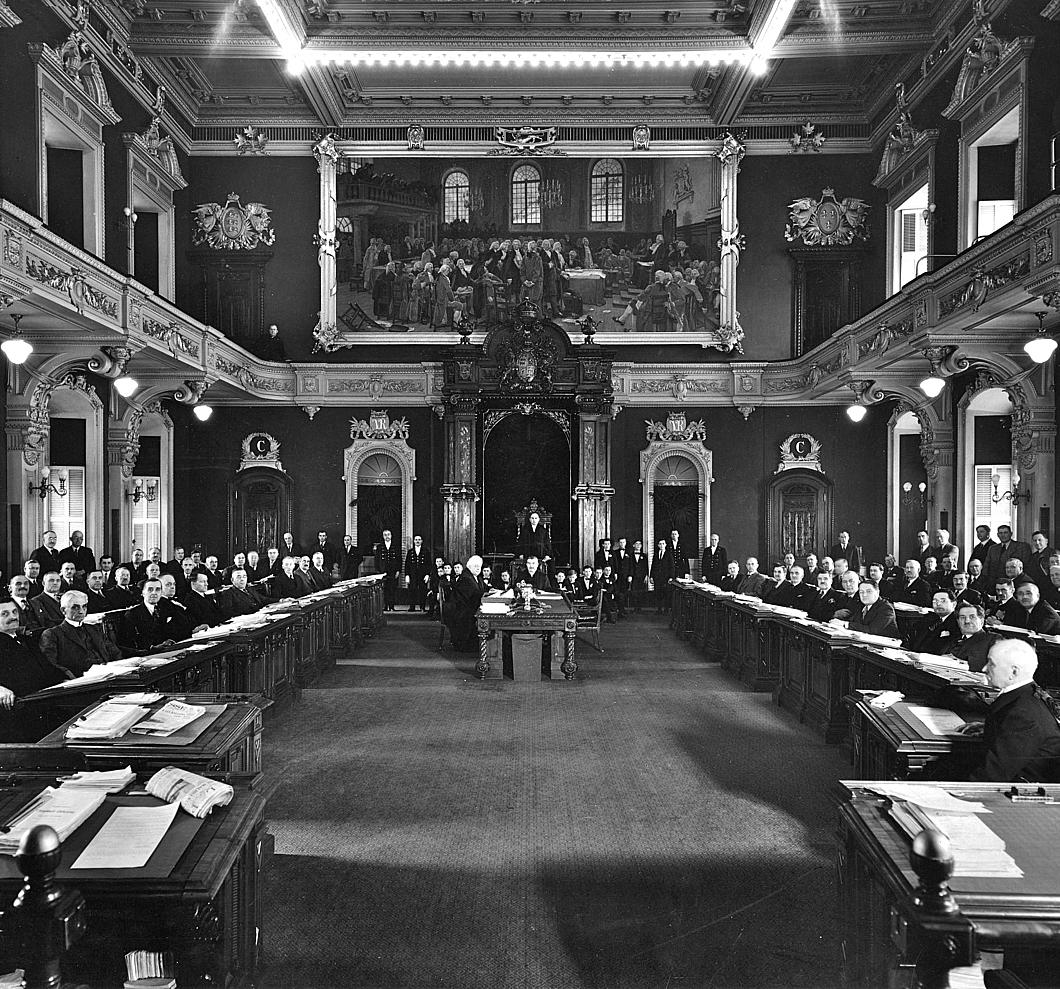
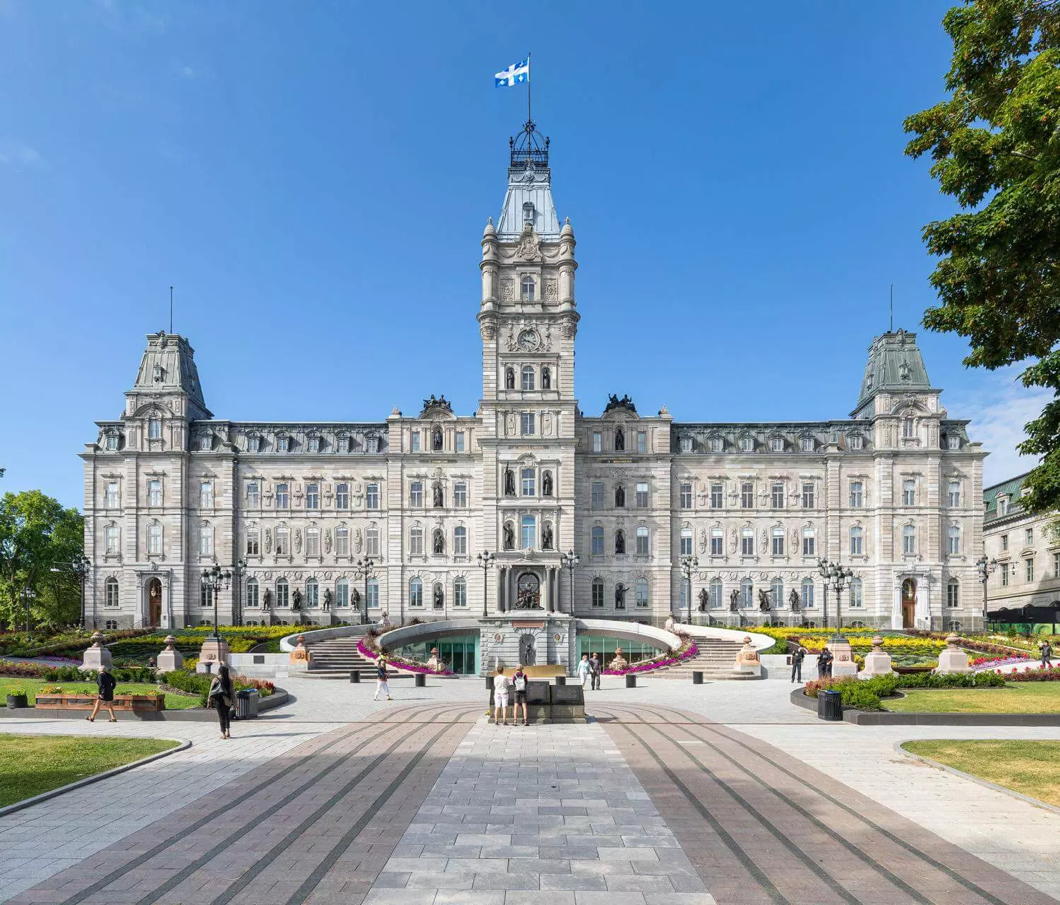
Fête du Dominion
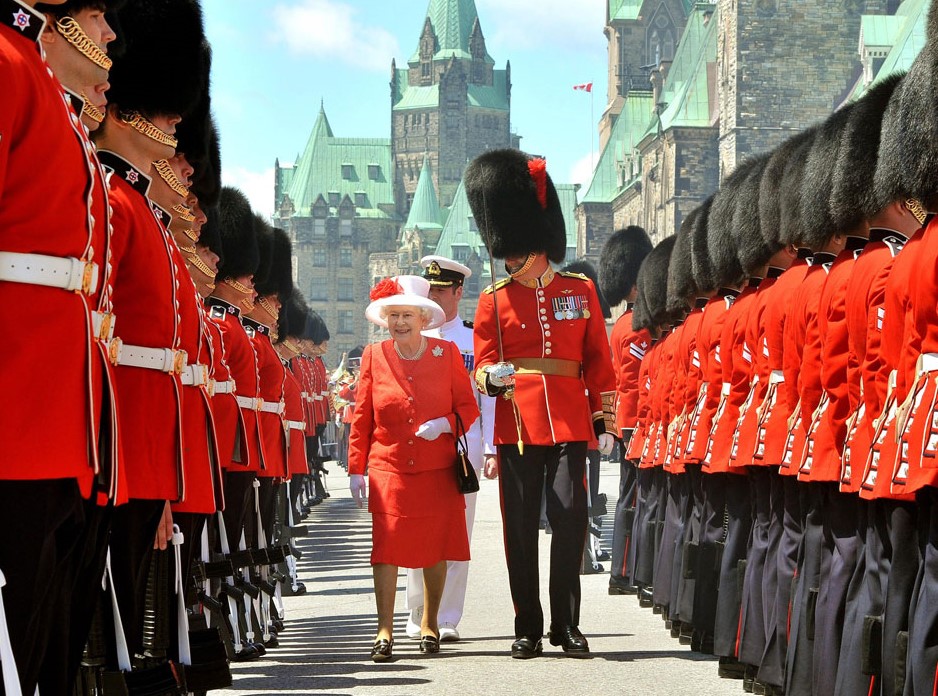
à tous nos amis canadiens!
Happy Dominion Day
to all our Canadian friends!
Canada is one of the most fascinating and interesting realms on the face of the earth, though the Canadians are a curiously humble people despite their immense achievements.
I’ve written some odd bits and bobs of Canadiana over the years, and thought a small selection of which might prove a suitable way of celebrating the great dominion’s national day.
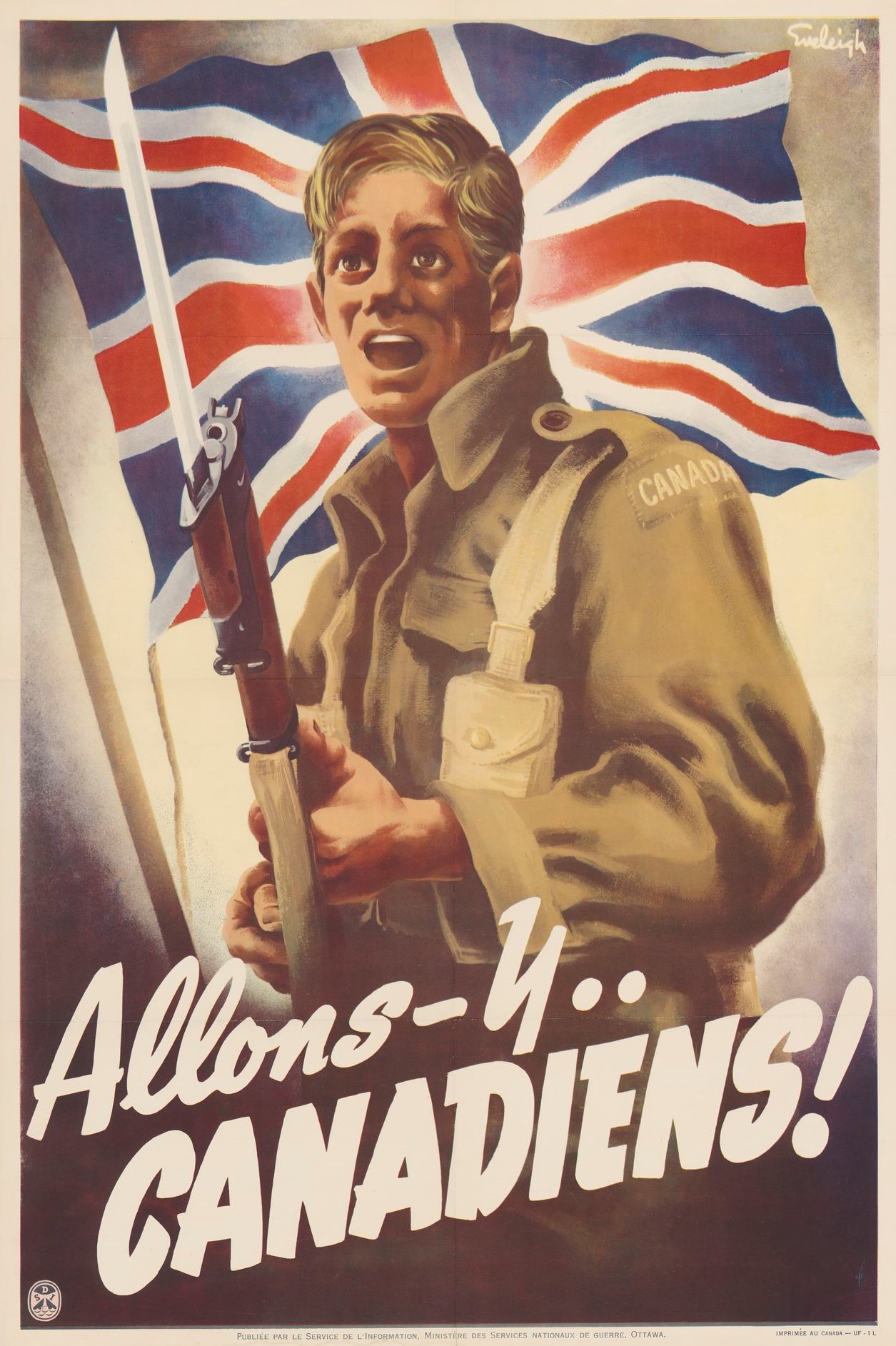
Buchan in Quebec
While the Salon bleu in Quebec’s parliament used to be green, the Salon rouge has kept its lordly colour. Conservative Quebec was the last of the Canadian provinces to abolish its unelected upper house which faced the chop in 1968, that year so beloved of duty-shirkers and ne’er-do-wells.
Thirty-three years earlier, the Salon rouge was the scene of a more regal ceremony: the official installation of the Scots writer and statesman John Buchan as Governor General of Canada. Being a Presbyterian with an in-built (but in his case only occasional) tendency to dourness, Buchan wanted to go as an ordinary commoner but the King of Canada insisted on a peerage for his viceregal representative in the dominion.
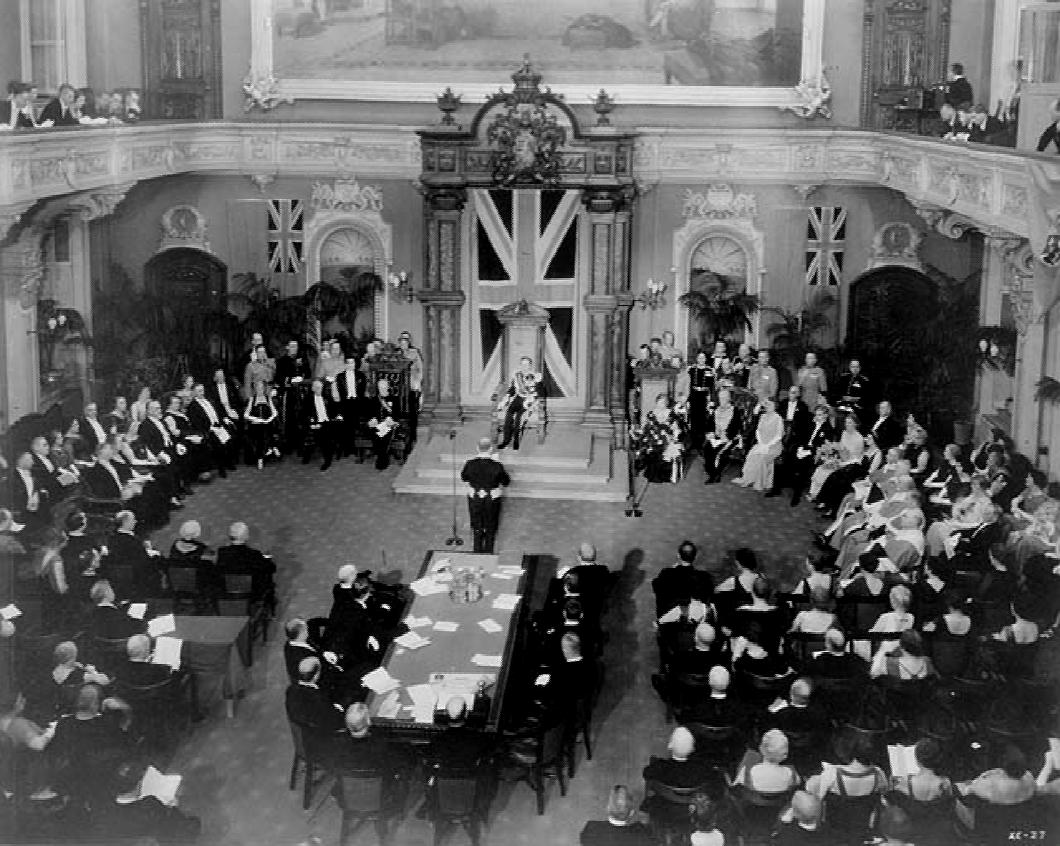
Thus it was Lord Tweedsmuir who arrived in Quebec in 1935 and was installed as Governor General in the Salon rouge on All Souls’ Day of that year. Above, the Prime Minister William Lyon Mackenzie King gives an address after the swearing-in.
Buchan proved an influential Governor General and helped set the tone of Canada’s monarchy in the aftermath of the 1931 Statue of Westminster that recognised the distinct nature of the Commonwealth realms. He also orchestrated the King’s successful 1939 trip across Canada — which also featured the King and Queen holding court in the Salon rouge of Quebec’s Parliament.
By the time of his death in post in 1940, John Buchan had become His Excellency The Right Honourable The Lord Tweedsmuir GCMG GCVO CH PC. Not a bad end to a good innings.

British Columbia in London
Colonial Agents & Provincial Agents-General in the Imperial Capital
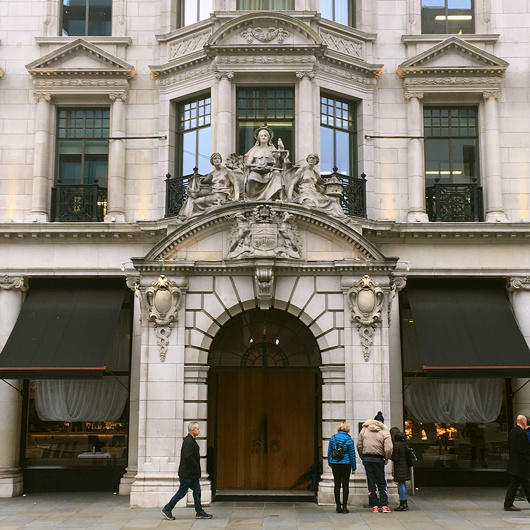
JUST WHERE THE elegant Edwardian urbanity of Waterloo Place turns into Regent Street there is an edifice that announces itself as home to the “Agent General for British Columbia”. Built in 1914-1915, it was designed by a not particularly prominent architect named Alfred Burr who did a lot of work for the Metropolitan Police and is also responsible for designing the charming little curator’s lodgings next to Dr Johnson’s House (which he restored 1911-1912).
The listing that protects British Columbia House, at 1-3 Regent Street, describes its style as “rich Baroque with both Roman and Genoese palazzo features composed on a large scale”.
The main entrance is on Regent Street with the province’s delightfully sunny coat of arms carved above the portal, guarded by allegorical figures of Justice and the like above. On the corner with Charles II Street, the inscription on the foundation stone proclaims its laying at the hands of Prince Arthur, Duke of Connaught on the sixteenth day of July in 1914.
But who or what on earth was the Agent General for British Columbia? (more…)
The politics of parliamentary colour
When Quebec’s « Salon bleu » was the « Salon vert »
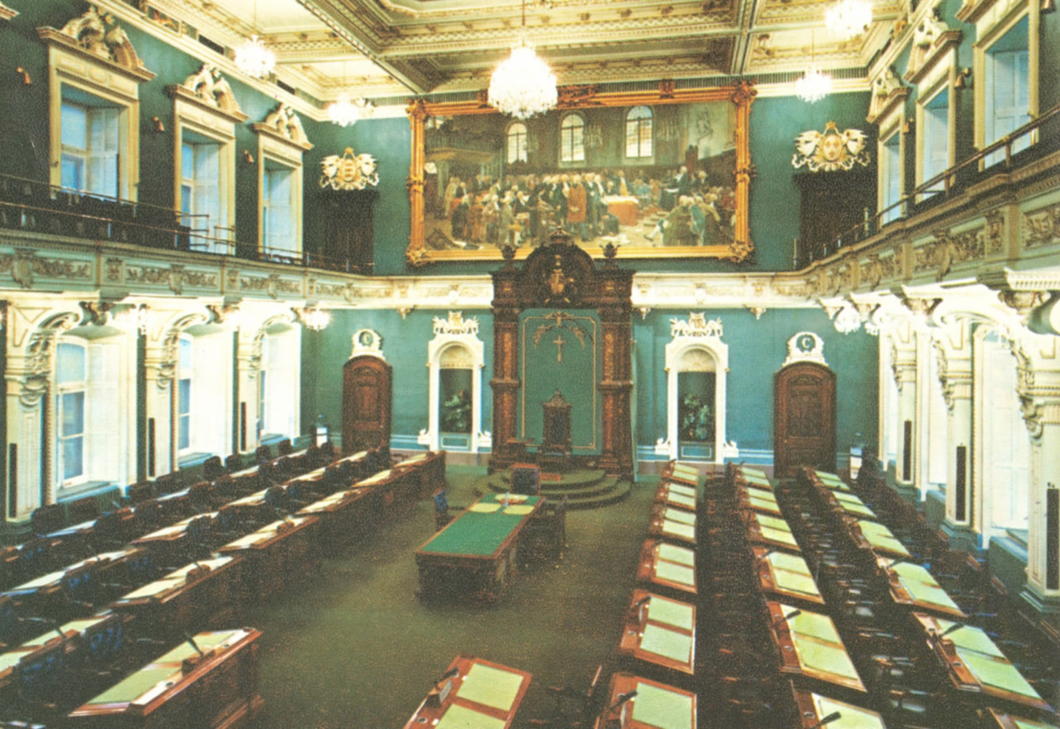
One Westminster tradition replicated in many times and places across the Commonwealth is a convention of colour: the lower house of a parliament is decorated in green, while the upper chamber is decorated in red. This reflects the green benches of the House of Commons and the red ones of the House of Lords.
Officially the plenary chamber of Quebec’s unicameral parliament is boringly the salle de l’Assemblée nationale but because of the colour of its walls it is more often known as the Salon bleu. One’s never surprised when Quebec bucks a trend or (more specifically) rejects an Anglo convention but it turns out the province’s plenary chamber did in fact used to be green until relatively recently.
When the members of the Legislative Assembly (as it then was) first convened in the Hôtel du Parlement in 1886 the walls were actually white. By the opening of the 1895 session the desks had been reappointed in green, but Le Soleil still made reference to the room as the “chambre blanche”. It was only in 1901 that the room was painted a “soft green” and the carpets and other furnishings changed accordingly. It even made an appearance in Alfred Hitchcock’s 1953 film “I Confess”.
From then the chamber was a Salon vert until 1978, when the decision was taken to begin broadcasting the proceedings of the Assemblée nationale.
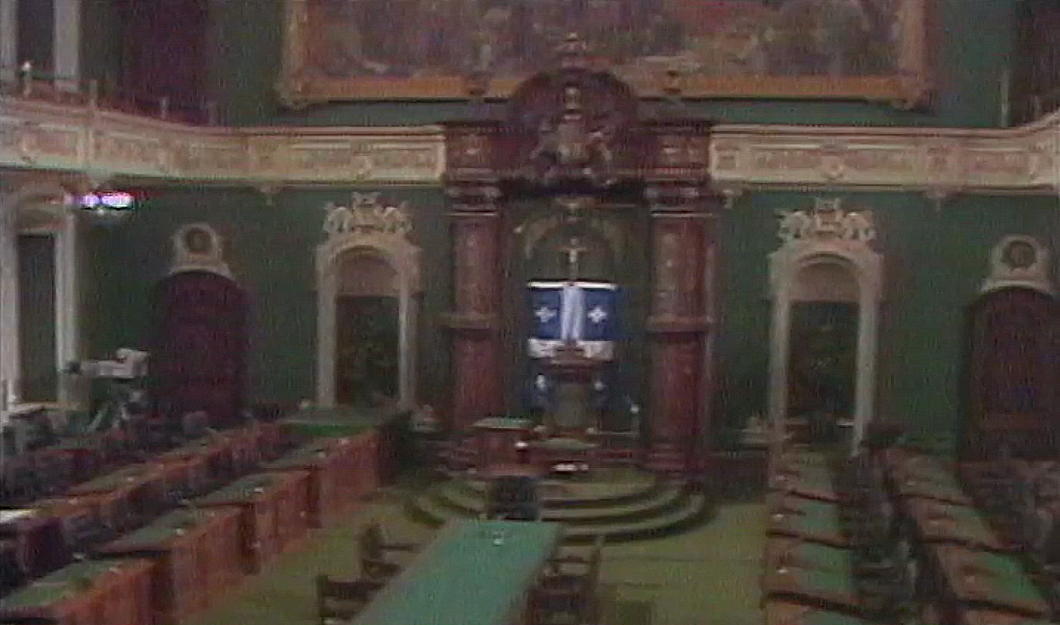
The television specialists complained that the dark green of the chamber was not visually conducive to the TV cameras available at the time and, looking at the evidence from the 1977 test session (above), one can see their point. Walls of either beige or blue were the options recommended in an official report, and unsurprisingly the national colour was chosen.
The historian Gaston Deschênes has mentioned the technical requirements of broadcasting also coincided with a desire to break with a “British” tradition. Certainly the government of the day, René Lévesque’s Parti Québécois, didn’t mind the change, while Maurice Bellemare — “the old lion of Quebec politics” and sometime leader of the old Union nationale — was deeply pleased that the chamber adopted the colour of Quebec’s flag.
So the walls were repainted sky blue and the furnishings changed accordingly, resulting in the Salon bleu we know today (below).
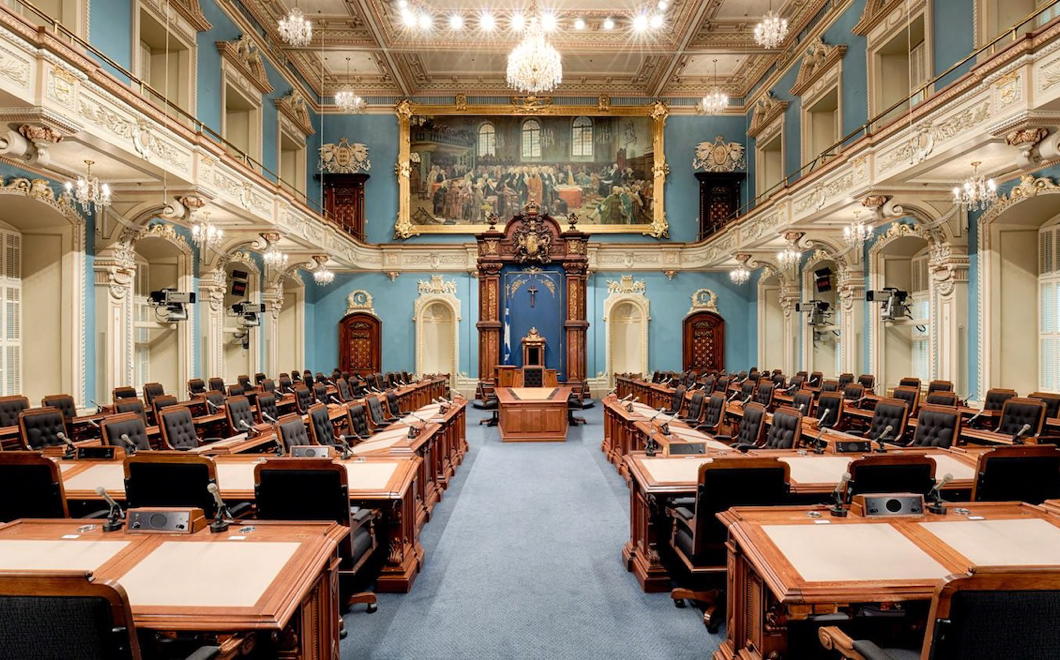
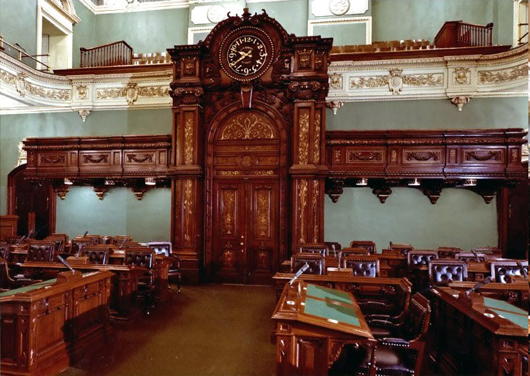
A tweet from the Assemblée’s official account shows two photos looking towards the chamber’s entrance from before (above) and after (below) it was made ready for television.
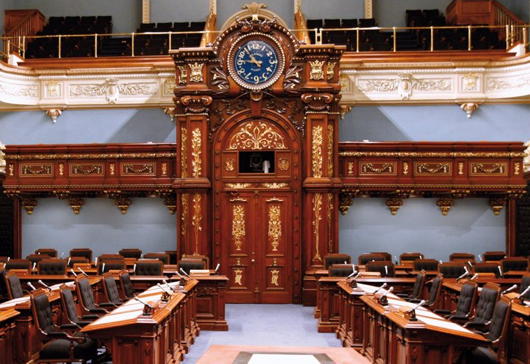
All the same, green is not universal amongst Commonwealth lower (or only) chambers. It’s not even universal in Canada: Manitoba joins Quebec in its azure tones while British Columbia’s is red-dominated.
Quebec was the last of Canada’s provinces to abolish its upper house, the Legislative Council, in 1968 (at the same time the lower house was renamed the National Assembly). The Legislative Council’s former meeting place is, of course, red, and the Salon rouge is used for important occasions like inductions into the Ordre national du Québec or the lying-in-state of the late Jacques Parizeau.
Protestant King in His Catholic Realm
George VI in Quebec
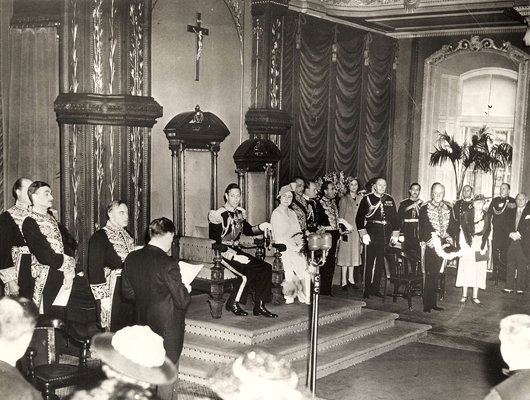
In the midst of some unrelated research the other day, I came across these photos of George VI on his first visit to Quebec as King in 1939. I think the Parlement du Québec is probably the only Commonwealth legislature to have a crucifix in its plenary chamber (c.f. ‘Christ at the heart of Quebec’, 25 May 2008). No, no, of course the Maltese do as well, in their surprisingly ugly parliament chamber. But Malta is now an island republic, while Quebec retains its monarchy.
In the above picture, the King and Queen of Canada hear a loyal address in the Salle du Conseil législatif of the Hôtel du Parlement in the city of Quebec. Below, the King speaks at a state dinner in the Chateau Frontenac. Seated is Cardinal Villeneuve, the Primat du Canada and Archbishop of Quebec.
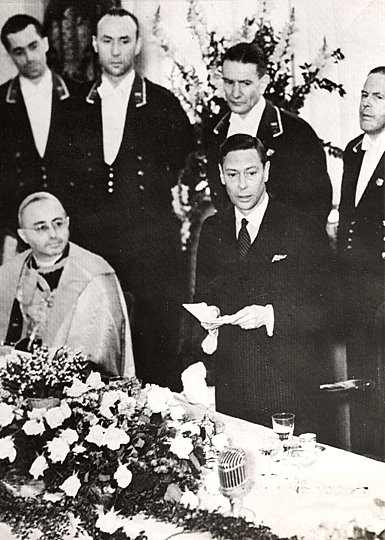
The UN at Quebec
IN 1943, THE BRITISH, Canadian, and American governments descended upon the city of Quebec, capital of la vieille province, for an intergovernmental conference to plan the invasion of France — surely one of the greatest military tasks ever undertaken in the modern era. The site proved auspicious due to a peculiar combination of factors: Quebec City enjoys a certain European cachet but with both the geographic safety of North America and the more spacious accommodation usual to that continent. The three governments held a second conference there in 1944, and in 1945 the International Labour Organisation met in the city, followed a few months later by the Food & Agriculture Organisation of the nascent United Nations.
With this track record of indisputable experience, the ville de Québec, lead by its mayor Lucien Borne, put in a bid to be the permanent seat of the United Nations Organisation. (more…)
A Breath of Fresh, Northern Air
The Dorchester Review Proves That Canada is Still Thinking
This summer I received an email from my friend Bruce Patterson, all-around nice guy and Deputy Chief Herald of Canada, informing me of a new historical and literary review just founded called the Dorchester Review. Intrigued, I obtained a copy and was pleasantly enthralled with what I found. The first issue of the Dorchester Review contained a variety of thoughtful articles on fascinating subjects. I spent an entire morning sitting comfortably on a café sofa and imbibing the intelligent and enlightening contents of the magazine.
The editors did issue a brief statement explaining the genesis of their new review. They had me at their Pieperian first sentence: “The Dorchester Review is founded on the belief that leisure is the basis of culture.”
Just as no one can live without pleasure, no civilized life can be sustained without recourse to that tranquillity in which critical articles and book reviews may be profitably enjoyed. The wisdom and perspective that flow from history, biography, and fiction are essential to the good life. It is not merely that “the record of what men have done in the past and how they have done it is the chief positive guide to present action,” as Belloc put it. Action can be dangerous if not preceded by contemplation that begins in recollection.
The endeavour of reviewing books, the editors acknowledge, has too often been reduced either to brief puff-pieces in the Saturday insert of the local paper or more high-minded but uncritical praise of like-minded academics for one another. “There are too few critical reviews published today, particularly in Canada, and almost none translated from francophone journals for English readers.” As someone with a lifelong love of Quebec, I am relieved that finally there is a review in my own language willing to take Quebec seriously.
“At the Review,” the editors continue, “we shall praise the good books and assail the bad.”
They also forthrightly explain their rejection of the narrow nationalist perspective that has been on the ascendant in Canada throughout the past century, especially since the foundation of The Canadian Forum. The Dorchester Review effectively throws Canada’s doors open to a more reasoned understanding of the country’s relationship with Europe (Britain and France particularly), America, the Commonwealth, and the world.
But the Dorchester Review is not a publication just for Canadians. There is a great deal of Canada in it, but also a great deal of the world. The second issue (just printed) features articles with titles such as “Why Marx is Still (Mostly) Wrong”, “1789: The First Counter-Revolutionaries”, “What Sort of Autocrats Were the Popes?”, “Can Vichy France Be Defended?”, and “The Scots Fight Back” (the last in response to an article in the first issue: “How the English Invented the Scots”).
Contributing editor Chris Champion is interviewed by CBC Radio here. A number of the contributors (Conrad Black, Paul Hollander, etc.) readers of The New Criterion will already be familiar with. The latest number also includes a book review by this, your humble and obedient scribe.
Head over to dorchesterreview.ca to find out more or subscribe.
Le drapeau « Jacques Cartier »
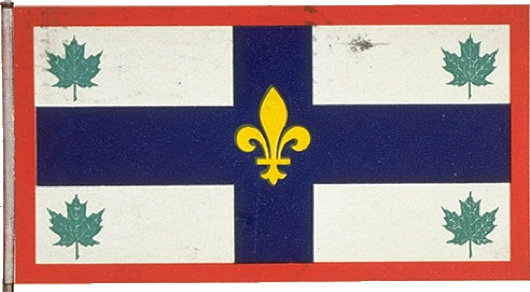
To be filed under ‘Flags I Never Knew Existed’: the Québécois heraldist Maurice Brodeur designed a flag commemorating the French explorer Jacques Cartier, founder of Quebec and Canada. The banner was designed to hang as an ex-voto in the Memorial Basilica of Christ the King in Gaspé, conceived in the 1920’s as an offering of thanks for the four-hundredth anniversary of the claiming of Canada by Cartier. The Great Depression brought the project to a halt, and the church was finally finished in 1969 as a modernist cathedral in wood — the only wooden cathedral in Catholic North America.
Was the flag ever actually executed? I don’t know, but I doubt it.
Meanwhile, in the Dominions
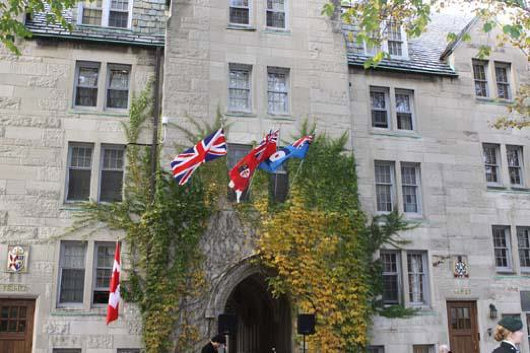
The University of St. Michael’s College in Toronto is, so far as I can ascertain, home to the only memorial ‘slype’ in the world, the Soldier’s Memorial Slype. Today being Remembrance Sunday, it was adorned with the old Canadian flags: the Union Jack, the Red Ensign, and the Air Force Ensign. (I can’t quite make out from the photograph whether it’s an RAF ensign or, more likely, an RCAF ensign).
The University of Toronto is, curiously, a university with constituent universities (such as St. Michael’s) within it, something which always confused me even though it’s an increasingly common phenomenon (such as with the National University of Ireland). At U of T, Trinity College (sorry, the University of Trinity College) is generally considered the most trad, but it’s nice to see St. Mike’s, a Catholic institution, being a bit old-school itself.
St. Michael’s College also boasts such illustrious alumni as Marshall McLuhan and Dino Marcantonio.
Canada’s Royal Standards
In anticipation of the recent visit of the Duke and Duchess of Cambridge to Canada, the government of that dominion unveiled new Canadian personal flags for the Prince of Wales and the Duke of Cambridge. The British Empire started out as a group of states and colonies united in the British crown, but as the Empire evolved into the Commonwealth, dominions were gradually recognised as sovereign entities of their own. Thus when, for example, Elizabeth II visits, say, Vancouver, it is not the ‘Queen of England’ who is visiting but the Queen of Canada exercising her functions in her own country. (This is a point frequently lost upon ideological republicans). Even when Elizabeth remains in London she puts on different ‘hats’ for different occasions. The only time I ever saw the Queen was at a Service for Australia at Westminster Abbey, thus it was the Queen’s Personal Flag for Australia which flew from the tower of the Abbey, not the British Royal Standard.
The Queen’s Personal Flag for Canada (above, top), often informally known as the Canadian Royal Standard, was devised in 1962 (the same year similar banners were created for Australia and New Zealand). Until 2011, the Queen was the only member of the Canadian Royal Family to have a personal flag for Canada, but now she is joined by her son and grandson, the Prince of Wales and the Duke of Cambridge respectively.
Les fondements de notre civilisation occidentale
« Les fondements de notre civilisation occidentale sont chrétiens ; le respect du christianisme est une condition sine qua non d’une droite qui veut conserver non seulement la prospérité économique, mais ce qui est au fondement de toute prospérité durable : le souci du bien commun, le respect de la loi naturelle, le sens de la justice. »
The latest issue of Égards, the premier journal of traditional conservatism in Quebec, contains an interesting analysis of the current situation faced by the various streams of the centre-droit spectrum in the province. I am, however, very much against the perpetual organisation-founding that goes on in political circles. There seems to be a belief that, when in doubt, start a new organisation, but this is precisely what the author, M. Décarie, proposes.
Canada’s Temporary Commons
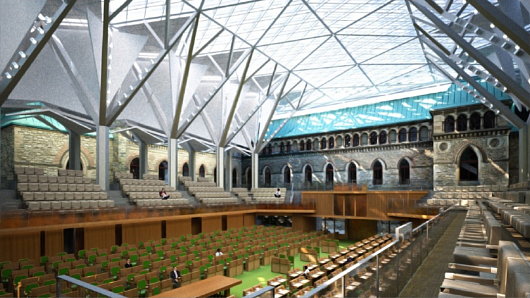
Canada boasts one of the most imposing parliamentary complexes in the world, presiding from a lordly bluff in the federal capital of Ottawa. While I think the city could do with an overall Hausmannisation, the government of the Confederation is undertaking significant efforts to renovate the buildings on Parliament Hill.
While the House of Commons chamber is renovated, the dominion’s lower house will meet in a new temporary chamber (above) constructed in the inner court of the West Block, one of a pair of high Victorian Gothic structures that flank the main parliament building. The restoration will take five to seven years, after which the temporary chamber will be converted into parliamentary committee rooms.
Interesting Things Elsewhere
This determined Celt is gunning for Thabo
Kevin Bloom | The Daily Maverick
Ireland’s 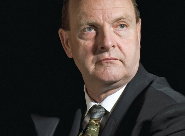 Paul O’Sullivan took over as head of security at South Africa’s airport authority in 2001, and discovered something was wrong from the start: why didn’t the policeman on duty want to take a statement about the attempted theft of his baggage? Since then, his life has been a series of bizarre events leading him ever deeper into the most complex criminal network of the post-apartheid era, including the recent the trial and conviction of former national police chief Jackie Selebi. But O’Sullivan’s determined quest to expose crookedness isn’t over yet, and he now has former president Thabo Mbeki in his sights. read more
Paul O’Sullivan took over as head of security at South Africa’s airport authority in 2001, and discovered something was wrong from the start: why didn’t the policeman on duty want to take a statement about the attempted theft of his baggage? Since then, his life has been a series of bizarre events leading him ever deeper into the most complex criminal network of the post-apartheid era, including the recent the trial and conviction of former national police chief Jackie Selebi. But O’Sullivan’s determined quest to expose crookedness isn’t over yet, and he now has former president Thabo Mbeki in his sights. read more
The apparatus of state will simply ignore the government
‘Inspector Gadget’ | Police Inspector Blog
Police across England were told by the responsible minister of the democratically elected government that they must not chase performance targets any longer. “I can also announce today that I am also scrapping the confidence target,” said the Home Secretary, Theresa May, “and the policing pledge with immediate effect”. But the ‘senior management team’ of the West Yorkshire Police have stated they will go on no matter what the government says. read more
Has Christian Democracy reached a dead end?
Jan-Werner Mueller | Guardian.co.uk
The commentator completes a brief survey of the struggles of Christian Democracy in Germany and Europe today. The French leader Georges Bidault claimed that Christian Democracy meant “to govern in the centre, and pursue, by the methods of the right, the policies of the left”. But Christian Democracy’s brief French moment in the 1950s didn’t survive the return of de Gaulle, and Christian Democratic parties on the continent today face an existential crisis. read more
Also: Monsignor Ignacio Barreiro’s talk at the Roman Forum’s 2010 Summer Symposium, entitled The Problem of Christian Democracy will be made available online in audio form sometime in the coming months.
Deep in Shanxi, the most Catholic village in China
Anthony E. Clark | Ignatius Insight
Church after church dot the landscape and high steeples rise above small villages as they do in southern France. Passing through a narrow side road one arrives and is welcomed by three great statues at the village entrance: St. Peter holding his keys is flanked by Saints Simon and Paul. Thirty minutes before Mass the village loudspeakers, once airing the revolutionary voice of Mao and Party slogans, now broadcasts the rosary. Welcome to Liuhecun, the most Catholic village in China. read more
Look for me in the Cotswolds.
Dino Marcantonio
The apologists for modernist architecture have tried for a century to gain public acceptance of and appreciation for their horrors. While the elites have almost overwhelmingly been converted, the general populace around the world still sees that the Emperor has no clothes, and almost always prefers architecture that reflects the tried and true, the local and the natural. Alain de Botton, the Swiss essayist, ‘pop philosopher’, and former ‘writer-in-residence’ at Heathrow Airport, is the latest to give it a go, this time in the pages of the modernist Architectural Record. Dino Marcantonio provides a most useful fisking. read more
Canada is a French country
Andrew Coyne | Maclean’s
At the recent Canada Day celebrations on Parliament Hill, Canadian PM Stephen Harper spoke of “the steadfast determination and continental ambition of our French pioneers, who were the first to call themselves ‘Canadians.’” At other times he has spoken of Canada as having been “born in French,” of French as “Canada’s first language,” and, most famously, of Quebec City as “Canada’s first city,” its founding in 1608 as marking “the founding of the Canadian state.” While the sentiment may seen anodyne, moreover, the implications are radical. read more
Happy Dominion Day
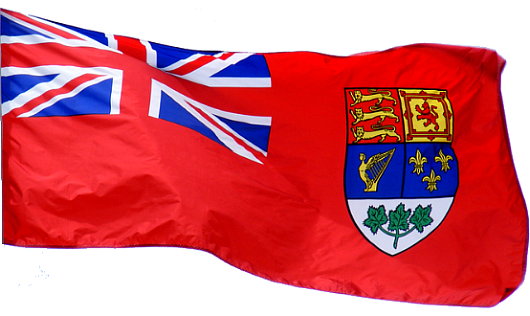
fête du Dominion
à nos voisins du nord.
Dominion Day
to our neighbours to the north.
Tintin à Quebec
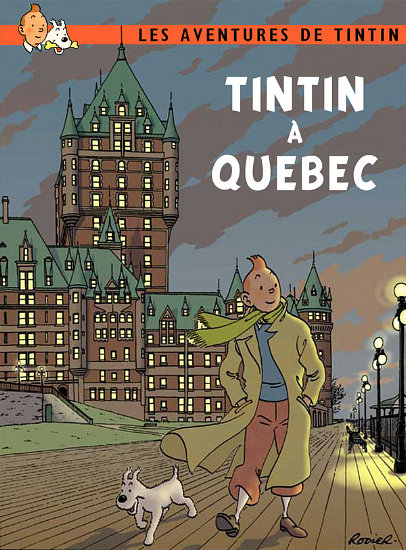
Tintinophilia and its allied science of Tintintology can almost seem like a cult sometime, with Moulinsart, the commercial wing of the Hergé Foundation, acting feverishly to quell any and all unauthorised outbreaks of Tintin resurrection. Their assiduity notwithstanding, Tintin pastiches are fairly common (though illegal) and vary in nature from respectful admiration to downright mockery. The Quebecois cartoonist Yves Rodier is one of the foremost pasticheurs of the famous Belgian boy reporter, and produced this cover (above) of a non-existant Tintin book set in the beautiful capital city of Canada’s French province.
While Tintin did visit Scotland in The Black Isle, I’d love to see a Tintin in Edinburgh book, and even more so Tintin in the Cape.
A Seraphic Book Launch in Toronto
Torontonians or those in the general vicinity of that metropolis might be interested in attending the upcoming launch of Seraphic‘s new book, Seraphic Singles: How I Learned to Stop Worrying and Love the Single Life. Of course, Dorothy is no longer single but instead happily married to a Scottish friend of mine, and you can see her gleefully prancing about the grounds of the Historical House the happy couple now call their home in this 4m29s video clip.
But when & where’s the book launch you say? It’s Thursday, March 25, from 7:00–10:00pm at the Duke of York Pub, 39 Prince Arthur Avenue, Toronto, Ontario, in God’s Own Dominion of Canada. The book is printed by the Canadian publisher Novalis, and is already obtainable from Amazon.com. Copies of the book will also be available for purchase at the book launch.
Seraphic Singles:
How I Learned to Stop Worrying and Love the Single Life
by
DOROTHY CUMMINGS
25 March 2010 (Thursday)
7:00pm–10:00pm
The Duke of York Pub
39 Prince Arthur Avenue
Toronto, Ont.
La Grande Séduction
This is a perfectly charming film. “La Grande Séduction” comically celebrates the dignity of work and the assault on the human character that inevitably results from reliance upon government welfare for survival. The inhabitants of the small fishing village of Ste-Marie-La-Mauderne have refused to abandon their homes after the collapse of fishing, but lack the resident doctor a potential investor requires in order to build his factory in the town. “La Grande Séduction” (released in Anglophone cinemas as “Seducing Dr. Lewis”) depicts the efforts of prominent townsfolk to unite and persuade the arrogant city-slicker Dr. Lewis to sign up as doctor for their little corner of the world.
Fans of “Local Hero” or “Waking Ned Devine” will find the theme familiar, but with a remote corner of maritime Quebec substituting for the Celtic hinterlands of the British Isles. If anything, the film allows the viewer an opportunity to hear that charming Québécois back-country accent. There are also elements that will grate somewhat the prudish tendencies of Anglos like us, but one must make allowances for the Latin temperament that survives in la Nouvelle-France and the other Romance realms.
Overall, a celebration of place, work, and community, and an interesting exploration of the conflict between artificiality and authenticity.
Canada’s Bastion of Catholicism
Our Lady Seat of Wisdom in Barry’s Bay, Ontario
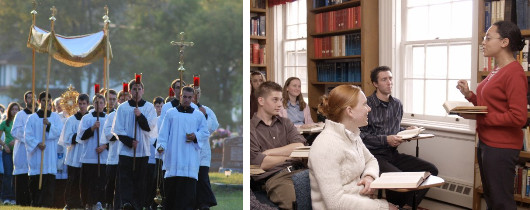
Many of our readers doubtless enjoy this blog for its unabashed defence of the glories of Christendom, all too many of which have passed into the pages of history. But highlighting those glimmers of hope that yet exist is another worthwhile task. The renaissance of Catholic higher education in the United States proceeds apace, with new institutions like Thomas Aquinas College, Christendom College, and such leading the way, while others retake the older Catholic universities from the inside. These places of learning have been gathered together in the Newman Guide to Choosing a Catholic Colleges, the guide to Catholic colleges for Catholics who actually want their Catholic colleges to be Catholic. An almost ridiculous thing to say, but such is the state of modern higher education.
While the Guide‘s purview was initially limited to the United States, Canada’s Our Lady Seat of Wisdom Academy — a college in Ontario offering one-, two-, and three-year Catholic liberal arts programs of study — began to get such rave reviews that, as Joseph Esposito, editor of the guide, put it, “we were so impressed by Our Lady Seat of Wisdom that we felt compelled to include it as well. The academy has accomplished much in a short period of time, and we look forward to it being an influential force in Catholic higher education.” In particular, the Academy has excelled at introducing home-schooled students to a more formal style of education to ease their transition into higher studies.
That, as the Newman Guide puts it, Our Lady Seat of Wisdom “provides a wonderful curriculum at a breathtakingly low cost” to students and the families supporting them is admirable, but the word on the street is that current economic woes of the world have landed the Academy in a bit of a financial bad-patch. The folks in charge are taking the proper steps of reducing pay and seeking out other savings, but I hope & pray that Catholics will be able to keep afloat this splendid institution which is utterly loyal to the Magisterium and devoted to educating the next generation of America’s and Canada’s Catholics.
Those interested in helping out can find out how to do so here. Americans in particular might take advantage of the non-profit status of the U.S.-based Friends of Our Lady Seat of Wisdom Academy. There is also a PayPal button in the right-hand column on the college’s main page. Having been on the receiving end of generosity myself, I know that every little bit helps.
Giving something to help this institution keep going is an act in keeping with the spirit of this Advent season.
Search
Instagram: @andcusack
Click here for my Instagram photos.Most Recent Posts
- Burns Tower April 19, 2024
- Patrick in Parliament March 18, 2024
- Articles of Note: 13 March 2024 March 13, 2024
- Cambridge March 9, 2024
- Taken on Trust March 4, 2024
Most Recent Comments
Book Wishlist
Monthly Archives
Categories



